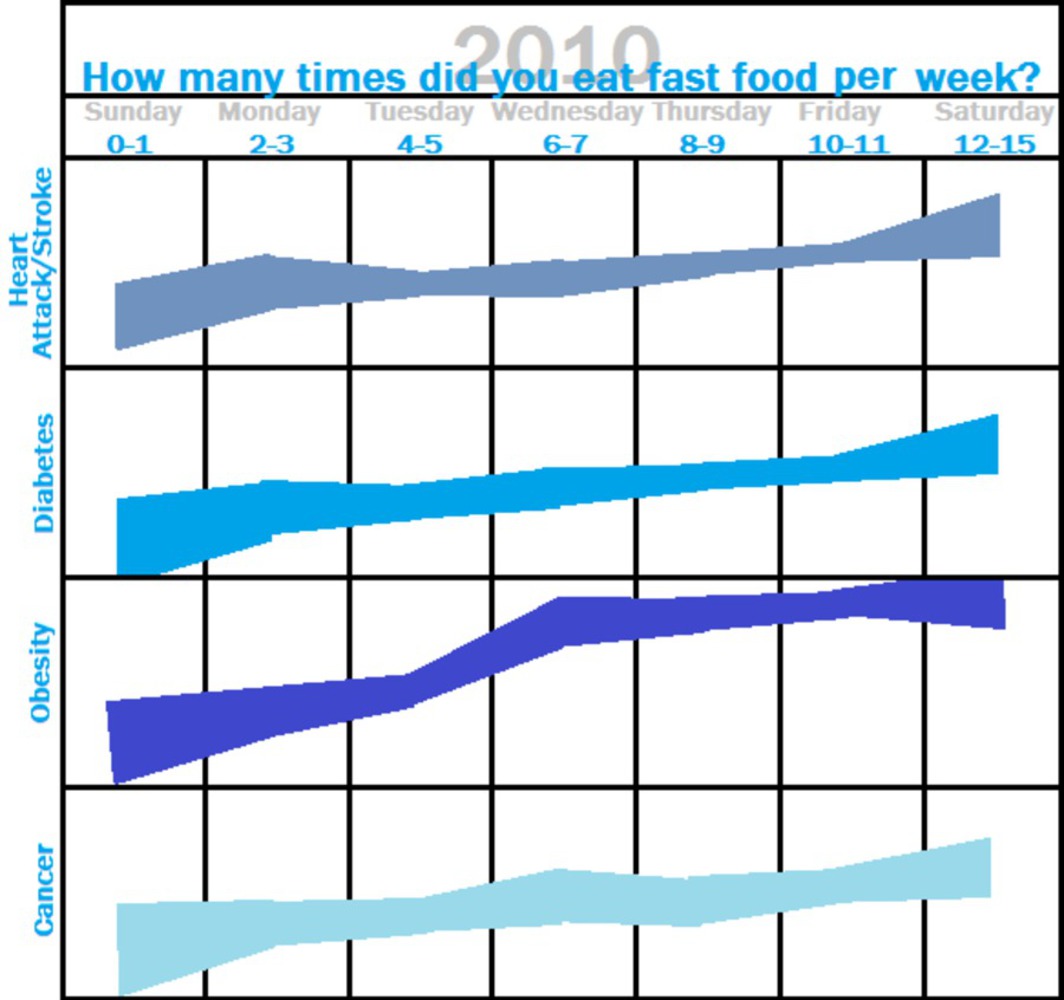Introduction
The problem I have chosen to focus on is unhealthy eating in the United States, particularly fast food, and how it affects health. Many members of my family have suffered from health problems related to unhealthy eating habits, such as heart problems and high cholesterol, so I see this as a huge problem especially in modern times. It seems as though many people truly do not understand how detrimental unhealthy eating can be; they just opt for the most convenient, and least expensive, choice. When I searched online for statistics showing correlation between fast food and weight problems, I stumbled upon several articles, but nothing presented in a clear, concise way to show just how many negative effects fast food can have on one's health. My goal is to show the negative effects in a way that is easy for someone to understand, so he or she has data to help consider lifestyle choices. I also would like to draw attention to how much eating has changed over the last 50 years or so, as our culture has evolved to one that constantly looking for quick solutions, such as fast food.
Design
I chose to place my information in the form of a calendar, as this is a format many people are familiar with, and are used to seeing on a regular basis. Each calendar correponds to a year from 1970 to 2013, and the viewer can click through the years using arrows at the upper right corner of the window. Each week represents a particular health problem, and each column corresponds to how often people eat fast food per week. A line graph indicates what proportion of people eating fast food, say 2-3 times a week, end up suffering from the particular health problem that week designates. The thickness of the lines in the graph shows what proportion of people fall in this particular category of eating fast food 2-3 times per week, so the line thickness is uniform throughout each column. Notice that it is the center of the line that indicates the proportion; not the top or the bottom. This format is one that will allow a viewer to compare different categories easily, but for those who are more number oriented, or want more precise data, I will have a feature that allows a viewer to hover over a "day" and find the percentage of people in that particular category of eating fast food x times per week, and the percentage of those people that suffer from the given health problem.
Note that the following examples do not represent actual data; they are just rough drafts of the data representation.

